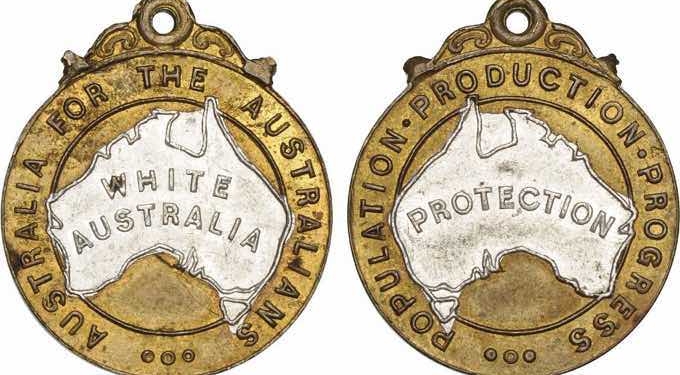
Things weren’t all bright and sunny in the late 19th and early 20th century in Australia. In fact, you could call this period anything but bright and sunny. The one thing that the country could be proud of was the fact that the colonies succeeded in becoming a Federation. This meant more freedom for Australia to pass its own legislations, but that quickly turned out to be not such a great thing. Click this to learn more about the policy that actually led to oppression in the country.
If you aren’t sure what I am talking about precisely, let me make it perfectly clear. The Commonwealth had one particular goal during this period and it was to achieve and, of course, maintain a white national character. They sought to achieve this through a series of acts that all later became known as the White Australia Policy and it enjoyed bipartisan support.
The Immigration Restriction Act was the first legislation that was actually aimed towards achieving this particular goal. It was designed to stop all non-European migrants from coming to Australia by making them take tests in order to be allowed entrance into the country. Tests that they were, obviously, predetermined to fail. The funny part is that the terminology wasn’t racist per se, but everyone knew exactly what the act was aimed at. Speaks a lot of hypocrisy, doesn’t it?
Speaking of hypocrisy, the Australian Commonwealth was actually ready to do something about the Aboriginals as well, which led to the assimilation process that was everything but socially inclusive. While the Government made it seem that the Indigenous will actually get to enjoy all the rights and privileges as the white Australians, the truth is that this process only made things worse by oppressing the Aboriginals and forcing them to abandon their own cultural heritage. Children were removed from their parents in the process and all the Indigenous individuals were forced to adopt the European beliefs and values if they wanted to have any rights whatsoever.
You might want to read more about that: https://ro.ecu.edu.au/cgi/viewcontent.cgi?referer=https://www.google.com/&httpsredir=1&article=1922&context=theses_hons
Looking at it today, and from outside of Australia in particular, we all know that all of these acts and policies had one rather dangerous and harmful goal in mind. Yet, we cannot help but wonder what it is that people thought of this during that period and whether some of the same thoughts are still present today. It’s pretty easy to look at everything from a distance and then try and form your opinions simply based on the facts that we are now all aware of. Here is an important question, though.
How did this White Australia Policy actually shape the national identity of this country? National identity is the idea that unifies the whole population and its characteristics often reflect those ideals that the whole nation wants to embody. Of course, mutual self-identification and shared heritage are definitely significant parts of the whole idea of unifying a population. So, the main question is whether the whole population actually had the same views towards Aboriginals and how those mentioned policies influenced and shaped the whole national identity of Australia.

White Superiority
There is no doubt that the 19th century was the time when national identity had an absolutistic character by definition. Specific people felt united and all the other races were to be excluded from that particular identity, as well as the whole nation. Let us now see how that actually played out in Australia in the late 19th, as well as the early 20th, century.
The population of Australia mainly consisted of emigrants that came from the British isles, or their descendants. This means that the majority of the people shared not only a common language, but also the same beliefs, values and culture. As the collective sense of “Britishness” prevailed and as the majority of people self-identified as British, this led to a common sense of superiority. In other words, it led to a myth that this whole country was actually occupied and ruled by British white individuals.
I suppose you can see how that kind of thinking was the perfect soil for the appearance of the White Australia Policy that was aimed at saying goodbye to multiculturalism and thus at creating a country that was, in essence, white. There is no doubt that this whole sense of superiority shaped the whole national identity of the country and most people were probably proud to be white, British subjects that are seen as dominant in Australia. Even though we would like to think that none of the common people were actually in favor of the acts and legislations that led to the oppression of Aboriginals, the truth is that the vast majority of people were probably perfectly okay with this, thanks to the sense of unity in superiority.
The Role Of Aboriginals
The fact that the Aboriginals were still present in the colonies only led to strengthening the feeling of superiority and the insistence on the inherent dominance of the white race was, in fact, reinforced due to the fact that the Indigenous were occupying these lands as well. To put it simply, people had someone to turn against in order to strengthen their national identity even more and the fact that social Darwinism theorized that superior races triumphed over the inferior ones didn’t make the situation much better. There was circumstantial evidence that revealed the extinction of Aboriginals resulted directly from their contact with the white race, which further affirmed the belief in the superiority of the white.
This led to the Aboriginals fading into the periphery of the society, as well as to their oppression in many different ways and methods. There is no doubt that people felt proud of their white national identity, which somehow resulted in them forgetting that the people who weren’t white were still people and that they did not deserve to be treated the way they were treated for many, many years. In short, the established national identity was the perfect platform for oppression.





![Everything You Ever Wanted to Know About 9/11 Conspiracy Theory in Under 5 Minutes [VIDEO] | by James Corbett](https://consciouslifenews.com/wp-content/uploads/2018/09/911-a-conspiracy-theory-350x250.jpg)










